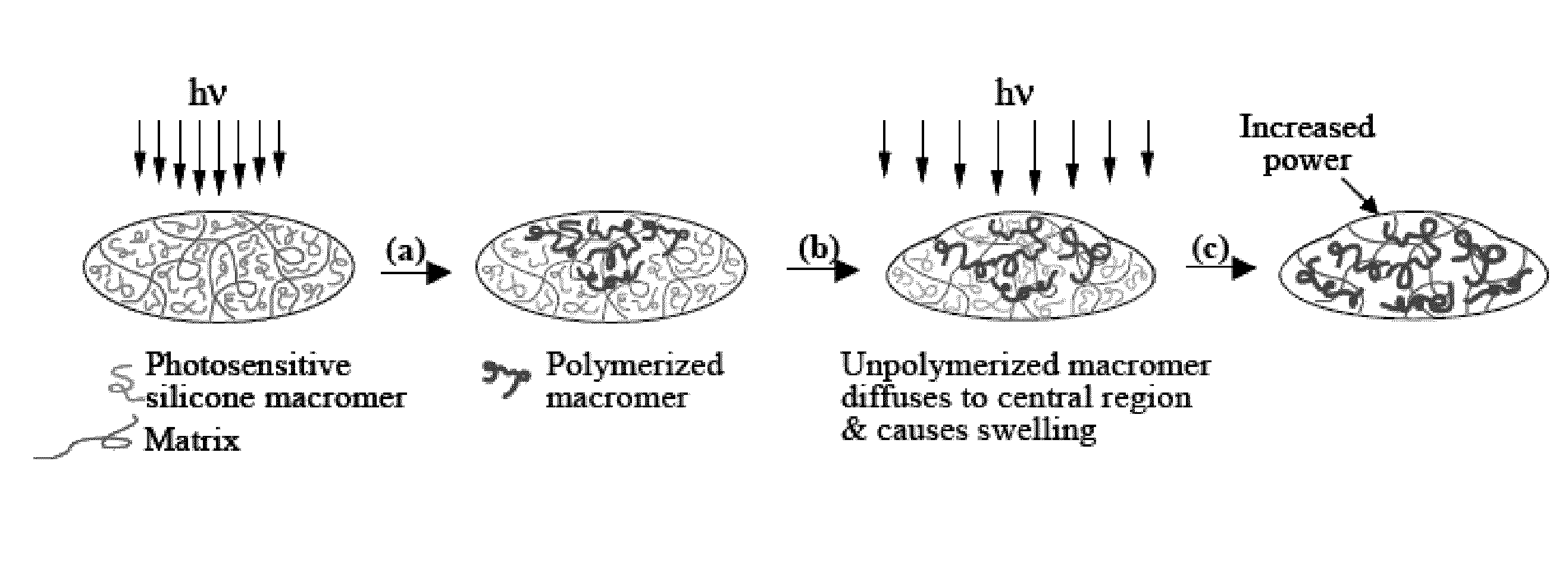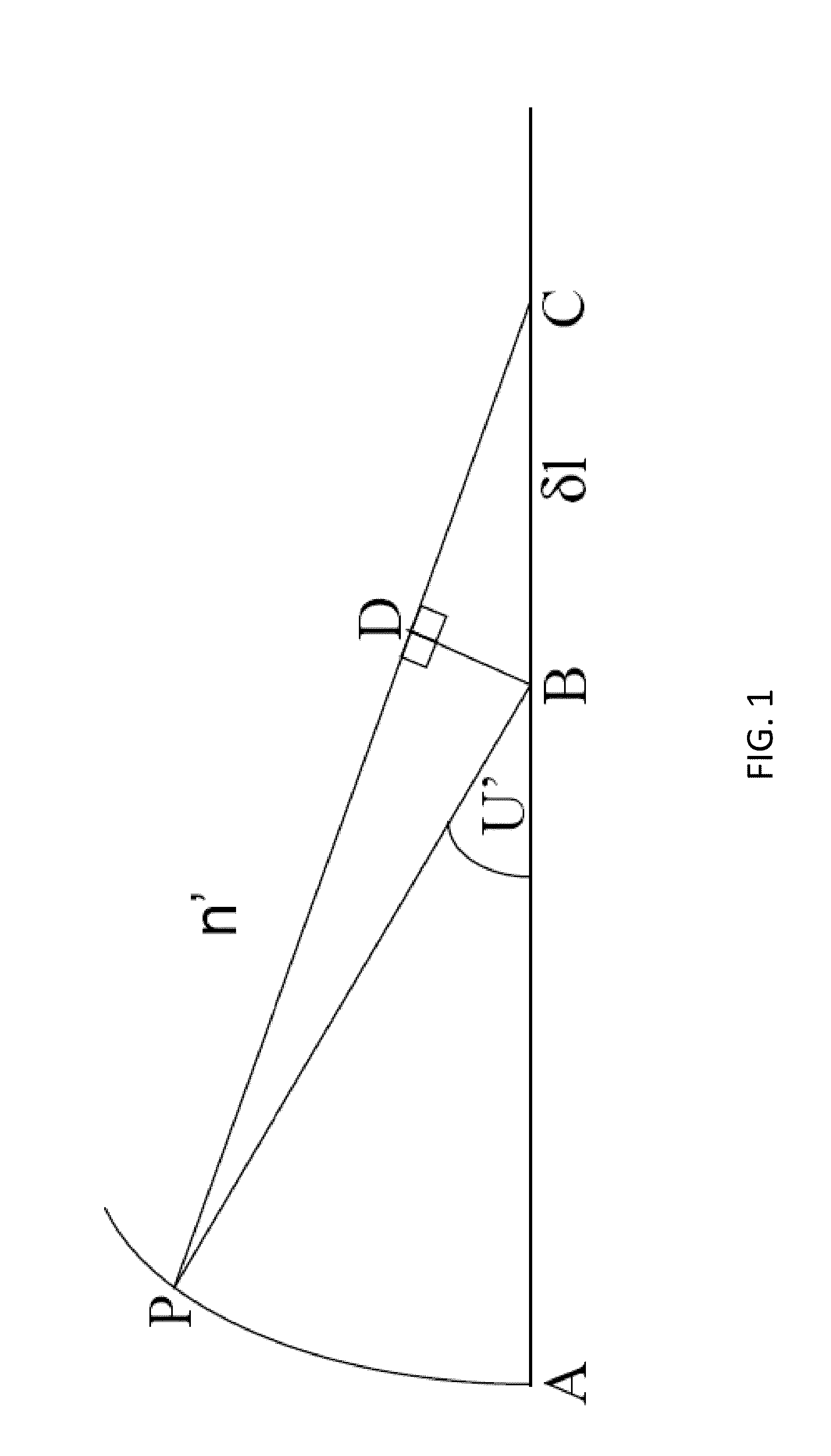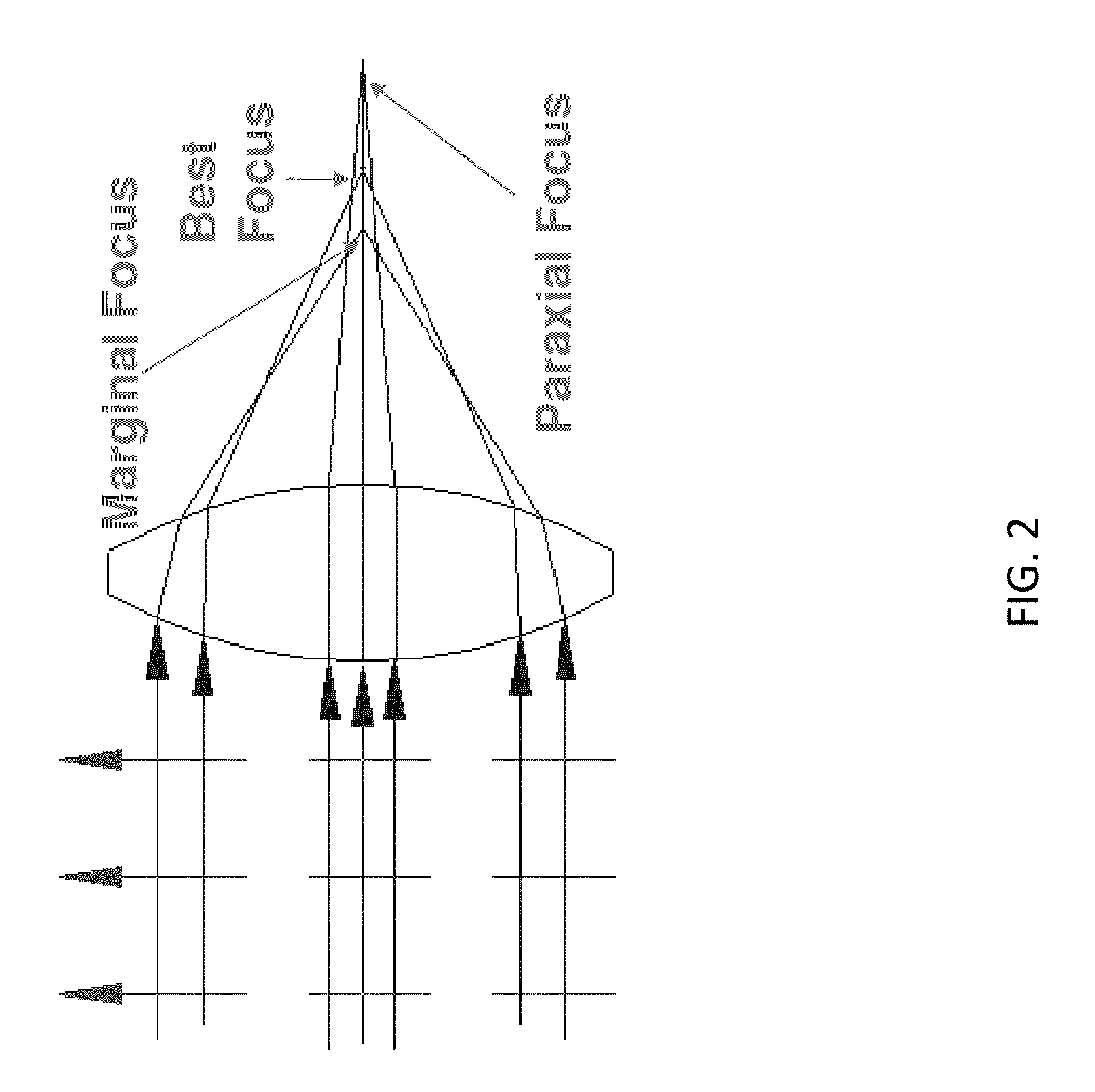Using the light adjustable lens (LAL) to increase the depth of focus by inducing targeted amounts of asphericity
a technology of asphericity and light adjustment, applied in the field of optical elements, can solve problems such as the swelling of the element in the area, and achieve the effect of increasing the depth of focus for patients
- Summary
- Abstract
- Description
- Claims
- Application Information
AI Technical Summary
Benefits of technology
Problems solved by technology
Method used
Image
Examples
example 1
[0134]A series of light adjustable lenses containing a silicone-based MC were prepared using standard molding techniques known to those skilled in the art. The lens had a first polymer matrix prepared from a silicone hydride crosslinked vinyl endcapped diphenylsiloxane dimethylsiloxane. The first polymer matrix comprised about 70 weight % of the lens. The lens also comprised about 30 weight % of a MC (methacrylate endcapped polydimethylsiloxane), 1 weight % (based on MC) of a photoinitiator (benzoin-tetrasiloxane-benzoin), and 0.04 weight % (based on MC) UV absorber. The lenses had an initial nominal power of +20.0 diopters. Twelve groups, of four LALs each, were exposed to a spatial irradiance profile defined by Equation 2 with beta values ranging from 0.05 to 0.57. Table 1 summarizes the specific spatial irradiance profile, average irradiance, and time applied to each of the LAL groups. At 48 hours post irradiation, the wavefronts of each of the lenses was measured. The measured 4...
example 2
[0139]To test the ability of the aspheric adjustment profiles to induce enough asphericity to provide patients' with increased depth of focus, a series of subjects were implanted with the light adjustable lens after routine cataract surgery, given a prior treatment to correct for postoperative residual sphere and cylinder, and then given an aspheric adjustment using the corneal compensated versions of the profiles described in Example 1. FIG. 9 and Table 2 summarize the monocular visual acuity data for a series of 32 eyes adjusted with aspheric profiles possessing a beta value between 0.40 and 0.57. For comparison, the average uncorrected visual acuity values for 12 eyes implanted with a LAL and adjusted for distance emmetropia only, are displayed as well. All of the LALs received some type of primary adjustment before the application of the aspheric profile.
[0140]Inspection of the graph in FIG. 9 indicates several important features. The first is that, on average, from 40 cm to dis...
example 3
[0144]General examples disclosed herein include an optical element composed of matrix polymer and a modulating composition (MC) that can be polymerized by an external stimulus (e.g. heat, light, etc) to control the amount of induced asphericity.
[0145]In each of the aforementioned examples, the lens may include an optical element that is a lens. In additional examples, the optical element is an intraocular lens (IOL). Also, the amount of induced asphericity is controlled by the application of a specific spatial irradiance profile. In some examples, the amount of induced asphericity is induced monocularly to induce extended depth of focus.
[0146]In particular examples, the amount of induced asphericity is tailored to provide intermediate vision (60-80 cm) or near vision (30-40 cm). In specific embodiments, the amount of induced asphericity can be customized for specific individual values.
[0147]In certain embodiments, the amount of induced asphericity is induced binocularly to induce ex...
PUM
| Property | Measurement | Unit |
|---|---|---|
| size | aaaaa | aaaaa |
| diameter | aaaaa | aaaaa |
| depth of focus | aaaaa | aaaaa |
Abstract
Description
Claims
Application Information
 Login to View More
Login to View More - R&D
- Intellectual Property
- Life Sciences
- Materials
- Tech Scout
- Unparalleled Data Quality
- Higher Quality Content
- 60% Fewer Hallucinations
Browse by: Latest US Patents, China's latest patents, Technical Efficacy Thesaurus, Application Domain, Technology Topic, Popular Technical Reports.
© 2025 PatSnap. All rights reserved.Legal|Privacy policy|Modern Slavery Act Transparency Statement|Sitemap|About US| Contact US: help@patsnap.com



